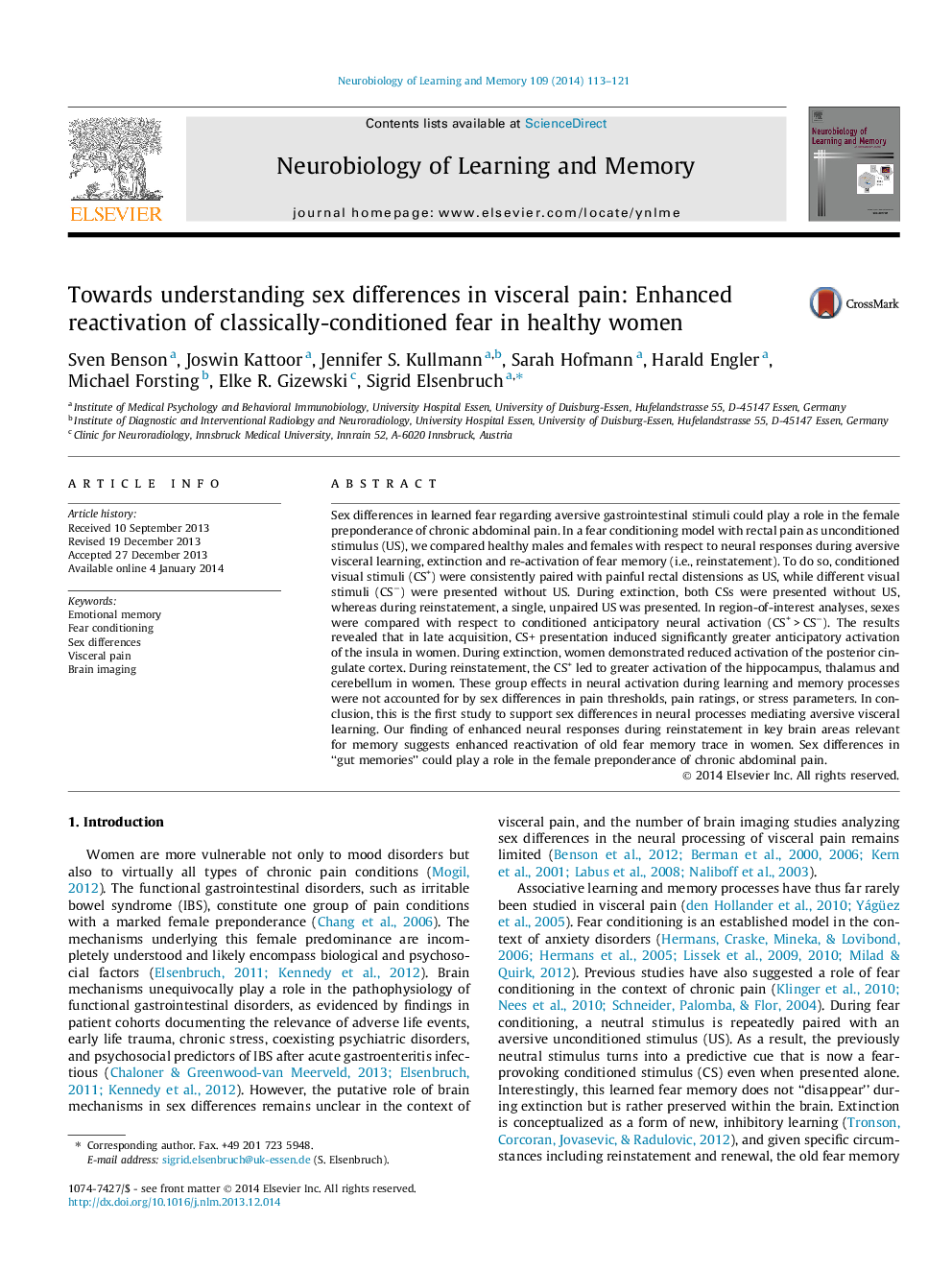ترجمه فارسی عنوان مقاله
به سمت درک تفاوت های جنسی در درد احشایی: فعال سازی پیشرفته از ترس کلاسیک مطبوع در زنان سالم
عنوان انگلیسی
Towards understanding sex differences in visceral pain: Enhanced reactivation of classically-conditioned fear in healthy women
| کد مقاله | سال انتشار | تعداد صفحات مقاله انگلیسی |
|---|---|---|
| 72072 | 2014 | 9 صفحه PDF |
منبع

Publisher : Elsevier - Science Direct (الزویر - ساینس دایرکت)
Journal : Neurobiology of Learning and Memory, Volume 109, March 2014, Pages 113–121
ترجمه کلمات کلیدی
حافظه هیجانی؛ تهویه ترس؛ تفاوت های جنسی؛ درد احشایی؛ تصویربرداری از مغز
کلمات کلیدی انگلیسی
Emotional memory; Fear conditioning; Sex differences; Visceral pain; Brain imaging

